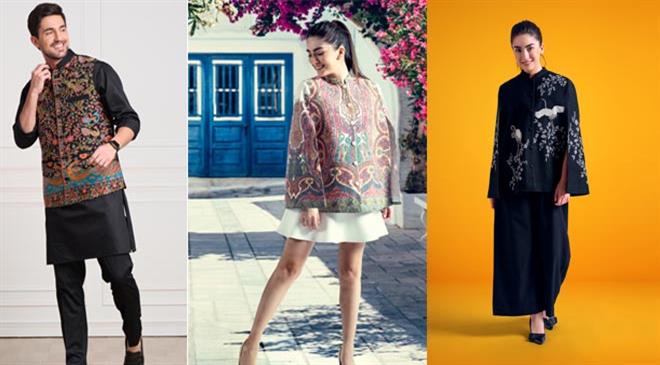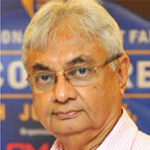
Sanchit Anand
Co-founder
Brand - Taroob
Every Indian designer has a story to tell
Taroob is an Indian fashion brand that was established in 2020, offering a collection of statement styles that draw inspiration from a broad and diverse range of sources. The brand’s founders have been exporting their creations to top markets in the US and Europe, specialising in scarves, shawls, ponchos, Nehru jackets, and capes for various international brands. Taroob’s collection showcases Indian heritage imbued in modernity, with a personal touch in every piece and exclusive box packaging. In an interview with Fibre2Fashion, Taroob’s Co-founder Sanchit Anand talks about the use of kalamkari motifs, the design process, and the future of prints and patterns in Indian designs.
Fibre2Fashion: Please tell us about how you got started in this field?
Sanchit Anand:
Taroob was born with the idea to cater to the web market across the globe. The brand draws inspiration from seeking to epitomise elegance and showcases exquisite collections. We have been exporting a significant portion of our creations to top-notch markets in the US and Europe. We are proud to be leading exporters of scarves, shawls, ponchos, and capes to a number of international brands like Tommy Hilfiger, Esprit, Banana Republic & Ann Taylor across North America and Europe.
F2F: Could you describe your design philosophy, and how do you incorporate it into your work?
SA:
Our design exemplifies modernity, yet we have taken care to bind our cultural heritage into contemporary fashion. We believe that clothes don't make a difference, but people who wear them do! Hence, we will constantly look for innovative ways to expand our horizons and reach out to our clients, thereby creating a strong bond.
F2F: Which traditional Indian prints and motifs do you enjoy incorporating into your designs, and how do you update them for contemporary audiences?
SA:
Taroob’s goal is to revive forgotten Indian arts and sell these stories in our handcrafted ensembles for men and women. Kalamkari prints and paisley motifs have been significant USPs of our collections so far.
F2F: How do you balance the use of bold, vibrant prints with more neutral or subdued colours in your designs?
SA:
The idea here is to create a modern/chic silhouette using our forgotten indigenous artisanal excellence. We ensure our colour palette is relevant to the prevailing season and the much-talked-about runway shows, which we follow consistently for inspiration.
F2F: How do you integrate trends and modern design elements into traditional Indian prints and motifs?
SA:
A significant part of Taroob’s success story has been the use of kalamkari, born out of an art of storytelling—i.e., using kalamkari motifs like flowers, paisleys, peacocks, and other divine characters from Ramayana and Mahabharata, and re-colouring them in pastel and other urban colour stories and turning them into contemporary silhouettes. This allows us to integrate modern trends into traditional arts and motifs.
F2F: Could you walk us through your design process, from ideation to execution?
SA:
Our design process involves the following steps:
- Creating a mood board based on the Indian arts and relevant motifs which we would like to incorporate into our collection.
- Identifying fabrics and silhouettes which are sophisticated yet chic to help us narrate our story in a more sustainable way.
- Identifying the perfect colour palette for the season.
- Preparing CAD (computer-aided designs) to finalise the artwork.
- Making a proto sample for approval to decide which styles will be a part of the line.
F2F: What are some of the challenges you have faced as a designer in India, and how have you overcome them?
SA:
As a mid-luxury segment brand, it can be challenging at times to sell our merchandise online as people want to touch and feel the fabrics and techniques. However, with the vast exposure pan-India, both offline and online, we hope to overcome this problem this year.
F2F: Tell us about a recent project, and the design decisions that you made during the process?
SA:
Our design process remains the same for all collections. However, eyeing the festive edit, which starts around Rakhi (a festival in India) this year, we want more silhouettes to be a part of our women collection in terms of cords and dresses.
F2F: What, according to you, distinguishes Indian design from other styles around the world?
SA:
I feel every Indian designer has a story to tell and that clearly exhibits in their handwriting.
F2F: What do you think is the future of prints and patterns in Indian design?
SA:
We are eyeing at a very good future when it comes to Indian designs and patterns, as they are unique and prestigious, not only to people of Indian descent but also to our western counterparts.
F2F: What advice do you have for aspiring designers who wish to establish themselves in the industry?
SA:
I would like to tell them – ‘Just be yourself and trust your instincts’. I would like to conclude with my favourite quote, “You are never wrong to do the right thing.” So, start believing in yourself.

Fanny Vermandel
Gabi Seligsohn
Arun Sirdeshmukh
Anurag Batra
Aseem Prakash
Rahul Mehta
Abhay Gupta
Pradip Mehta
Rahul Mehta
Bill D’Arienzo


20230103183907.png)








_8.JPG)

